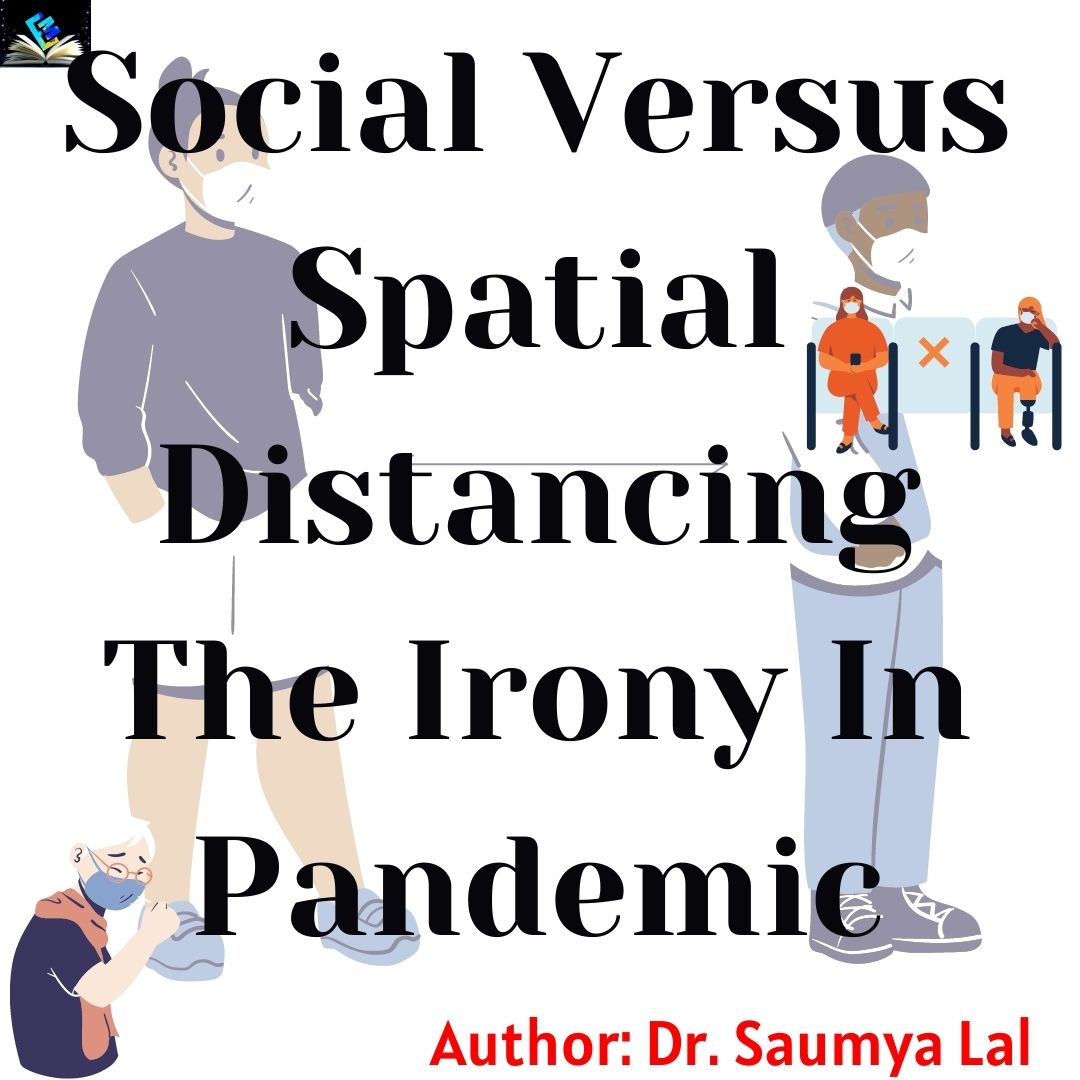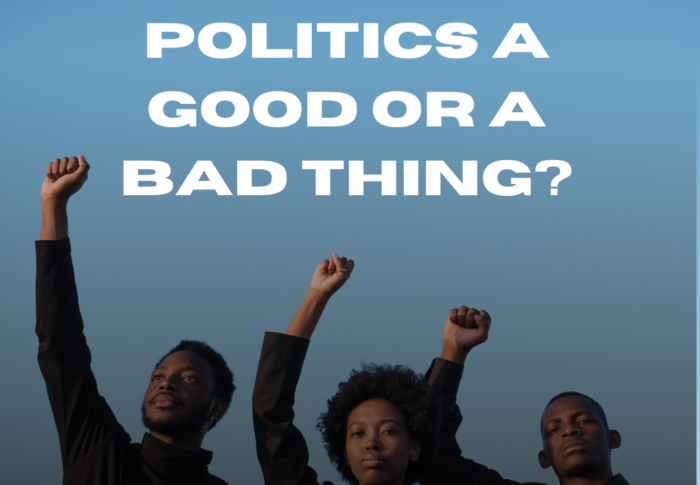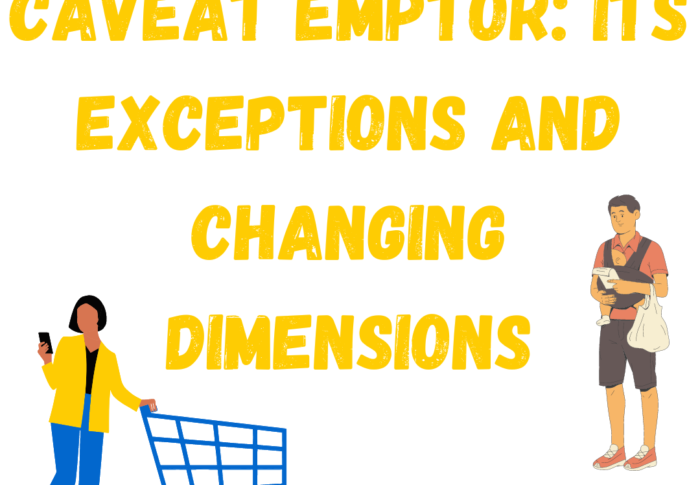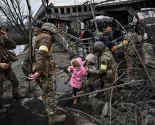
Social Versus Spatial Distancing | The Irony In Pandemic
Keywords:- Pandemic, Social distancing, Covid – 19, Isolation, Infected patients
Author: Dr. Saumya Lal
Introduction
The new coronavirus has impacted individuals all over the world, and state and municipal governments are taking drastic measures to prevent the disease’s spread and reduce the outbreak’s public health and economic consequences.
Social Distance
Due to the COVID-19 epidemic, a socially undesirable and culturally sensitive phenomenon known as social distance has become a term in common conversation. In Indian culture, appropriate intimacy and acceptable physical proximity are prized over the concepts of seclusion and social distance. Along with the pandemic’s impact on the economy and livelihood, the increase in COVID-19 cases and subsequent prescriptions for social distance have shown a fascinating and overlooked societal consequence of the epidemic. The practice of “maintaining at least six feet distance in social interactions,” with all of its symbolism and practical implications. It has been the single most effective non-pharmaceutical intervention in combating the recent worldwide upsurge of the previously unprecedented pandemic caused by the spread of COVID-19.
The term “social distance” was coined to describe this concept, and we saw how it influenced the socio-political discourses of the time, as well as the practices and habits of our everyday interactions and standards of conduct. In a society that emphasises closeness and intimacy while opposing formality and distance in interpersonal relationships, social distancing as “a concept” and “a rule” in the context of social interactions is, in some ways, new. The dialectic between the “need of the hour” and “traditional norm demand” draws sociologists to reconsider many aspects of “distance.”
Distance
The distance in question isn’t just physical or geographical. It takes on a culturally created and socially significant significance. Anthony Giddens (2009), a renowned British social theorist, has educated us of the standards that individuals from many regions of the world observe while interacting with others in public spaces. He observes, for example, that in Western society, individuals generally maintain a distance of at least three feet while speaking or interacting with others face to face.
In practice, Indians, on the other hand, rarely adhere to the social distance criterion. In this way, the recent pandemic has produced a new standard that is incompatible with our existing cultural mindset. We typically encourage others to come closer as a sign of closeness to prevent geographical distance and loneliness. As a result, distance is no longer only a geographical notion; it has numerous connotations in various cultural contexts and interactions. This is a fluid, culturally distinct process.
Fear
These coping methods are meant to eliminate imminent future hazards for apparent reasons. Not to mention the fact that fear arises from the worry of bad outcomes. Fear is not created by rewarding outcomes. From the perspective of the individual concerned, the degree of negativity (and its likelihood) determines the degree of dread. In the minds of two distinct people, the same stimuli may elicit various types and degrees of dread. Fear is context-specific as well as individual-specific in this way.
The real dynamics of social distance are determined by these combinations. Based on the current evidence, men appear to be more vulnerable to COVID-19. The tendency is the same in our nation as it is in other countries: male patients outweigh female patients. So far (as of 11 May 2021), 65.49 percent of COVID-19-infected male patients in India are men, whereas 34.51 percent of female COVID-19-infected patients are females (based on available data).
Space and Location
As a consequence, an intriguing transition of “space” surrounding a person’s body into “location” occurs. It’s important to distinguish between a “space” and a “location” here. “Place” is more than just a geographical region or an abstract concept of space; it is the place where we dwell, the place that provides us comfort and relieves us of the dread of being attacked by an unknown adversary. It’s a psychological transformation of space. In a temporal connection with people, a foreign area gradually becomes our place, perhaps for a few minutes. Our cultural behaviours emerge through time. As a result, a space is formed and inhabited.
When we feel at ease inside the confines of space, within the tolerance limit, some expressive and symbolic elements are added. The sensation of safety works as a trigger for transforming an area into a destination. For some, the same space is a location, whereas for others it is merely a geographical space. Multiple representations of space are a word that may be used to describe it. From a psycho-cultural standpoint, the concept of “social distance” takes on new significance. To combat the COVID-19 epidemic, social distance and isolation have been widely implemented. Because of the negative social, psychological, and economic repercussions of a total or near-complete lockdown, more moderate contact-reduction strategies must be developed.
Flattening the Curve
We examine the effectiveness of three distancing methods meant to maintain the curve flat and aid compliance in a post-lockdown future using a social network methodology. Limiting engagement to a few recurring connections, comparable to building social bubbles; finding similarity across contacts; strengthening communities through triadic techniques are some of these strategies. By preserving physical distance and limiting social contacts. The non-pharmaceutical intervention of social distancing is a critical approach to decrease the spread of COVID-19.
To minimize overburdening healthcare facilities, the goal is to reduce illness transmission and growth rates, a strategy known as flattening the curve. Bans on public events, the closure of schools, colleges, and non-essential workplaces, the limitation of public transit, travel and mobility restrictions, and the restriction of physical encounters are all examples of social distancing measures. Governments and organisations are under economic and social pressure to progressively and safely open up societies in the absence of a COVID-19 vaccination, but they lack scientific data on how to do so.
Conclusion
By allowing users to distinguish between high- and low-impact interactions, we give explicit social network-based solutions. To empower individuals and organisations to adopt safer contact patterns across many domains. Individuals are empowered to strategically alter as well as regulate their relationships without being asked to totally isolate, which may lead to better compliance. Instead of broad rules of self-isolation, the focus should be on comparable, community-based, and repeatable practices.
Mail us at edumoundofficial@gmail.com






